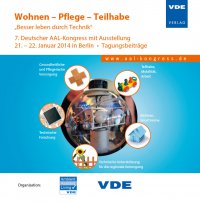Recommendations on Interoperability, Specifications and Standards
Konferenz: Wohnen – Pflege – Teilhabe – „Besser leben durch Technik“ - 7. Deutscher AAL-Kongress mit Ausstellung
21.01.2014 - 22.01.2014 in Berlin, Deutschland
Tagungsband: Wohnen – Pflege – Teilhabe – „Besser leben durch Technik“
Seiten: 10Sprache: EnglischTyp: PDF
Persönliche VDE-Mitglieder erhalten auf diesen Artikel 10% Rabatt
Autoren:
Eichelberg, Marco; Rölker-Denker, Lars; Hein, Andreas (OFFIS – Institute for Information Technology, Escherweg 2, 26121 Oldenburg, Germany)
Inhalt:
This article summarizes the findings of the EU FP7 AALIANCE2 project with regard to the relevance of standards and interoperability to the field of Ambient Assisted Living (AAL). The vision and promise of AAL is to provide an intelligent environment surrounding the user, an environment that monitors and “understands” what the user is doing – or trying to do, an environment that offers support when needed, and remains largely invisible otherwise. The implementation of this vision requires many “building blocks”: system components and human services need to integrate, to work together, in order to provide this desired ambient support for the user. This capability is called “interoperability”. Standards are arguably the most important “building block” for enabling interoperability among AAL systems and system components, and as such of high relevance for the development of AAL products. However, the availability of standards is not sufficient to really solve the challenge of an interoperable AAL product world – there are other important building blocks like integration profiles, certification programs, and more. Furthermore, it should be noted that a standards-based interoperable product range has implications on the business model, which may be positive or negative depending on the market structure.


